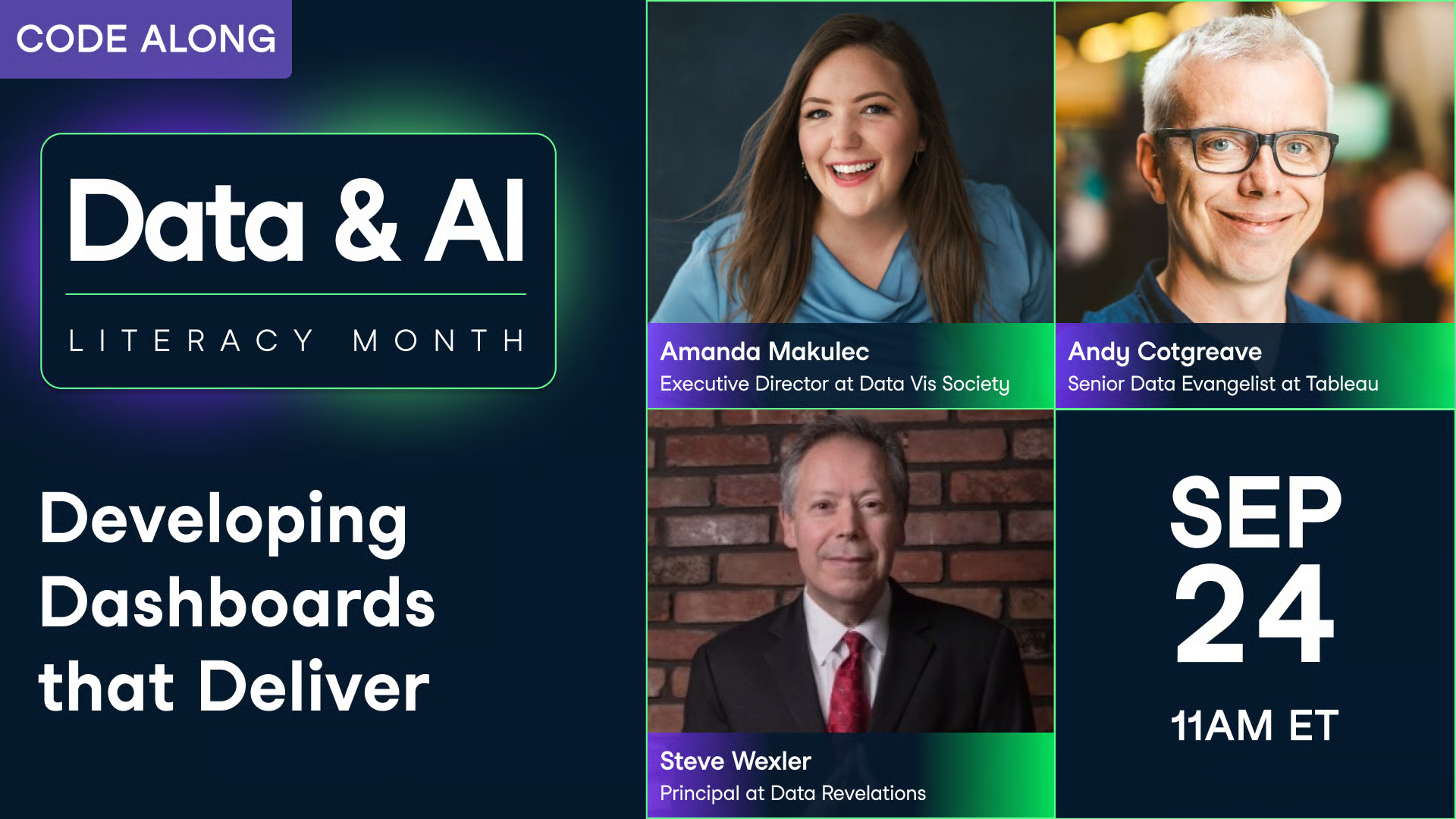Training 2 or more people?
Get your team access to the full DataCamp library, with centralized reporting, assignments, projects and moreDeveloping Dashboards that Deliver
September 2025
Related
webinar
Designing Dashboards that Deliver
The four authors of "Dashboards That Deliver", will walk you through a complete dashboard development process—from initial discovery to long-term maintenance.webinar
Dashboard Design in Power BI
Learn principles of dashboard design to apply to your own dashboards.webinar
Creating Compelling Data Visualizations
In the first of three data storytelling sessions, three data visualization experts take you through how to create impactful visualizations for any audience.webinar
Dashboard Design Best Practices in Tableau
In this live Tableau training, you'll leverage the right tools to design reports. Using a video game dataset, you will learn how to customize charts, use themes, and some best practices when working on data visualizations.webinar
Building Dashboards with Power BI & DAX
Shannon Lindsay, Senior Program Manager for Power BI at Microsoft, guides you through the process of building interactive dashboards using Power BI.webinar